new posts in all blogs
Viewing: Blog Posts Tagged with: dwellers, Most Recent at Top [Help]
Results 1 - 10 of 10
How to use this Page
You are viewing the most recent posts tagged with the words: dwellers in the JacketFlap blog reader. What is a tag? Think of a tag as a keyword or category label. Tags can both help you find posts on JacketFlap.com as well as provide an easy way for you to "remember" and classify posts for later recall. Try adding a tag yourself by clicking "Add a tag" below a post's header. Scroll down through the list of Recent Posts in the left column and click on a post title that sounds interesting. You can view all posts from a specific blog by clicking the Blog name in the right column, or you can click a 'More Posts from this Blog' link in any individual post.
A Sudden, Fearful Death. Anne Perry. 1993. 464 pages. [Source: Library]
A Sudden, Fearful Death is the fourth book in Anne Perry's William Monk mystery series. I am definitely settling into the series and enjoying it very much! To catch up readers:
William Monk, our detective-hero, has lost his memory. Occasionally, he'll get a flash of something resembling a memory. But for the most part, he's always got one case on the back of his mind: his own. He's piecing together who he was. What he's learned so far is that he was an absolutely horrible jerk that most everyone hated. He does NOT want to be that guy anymore.
Hester Latterly, our heroine, was one of the "Florence Nightingale" nurses during the Crimean war. Her employment since coming home is irregular but somewhat steady. Usually, she's a private nurse. In this book, however, she's going undercover at a hospital...
Oliver Rathbone is a lawyer--a barrister--on "friendly" terms with both William Monk and Hester Latterly. He's even invited Hester to meet his dad, Henry! I've come to greatly appreciate him. He has at various times hired William Monk to do detective work for him.
Lady Callandra Daviot is a saint--nearly. She helps William Monk find work as a private investigator. When he's in-between cases, she makes sure he has enough to see him through. She takes an interest in some of his more interesting cases. She is very good friends with Hester. At times she's helped Hester find suitable employment as well.
These four are our "main characters" that we spend a lot of time with in each book in the series.
The opening of A Sudden, Fearful Death reminded me of some of Wilkie Collins' books--in a good way. I was absolutely hooked though a bit confused since I didn't see how these opening chapters could connect with the book's description on the back cover. The chapters serve as a compelling prologue of sorts--an overture.
The premise: Prudence Barrymore, a nurse at a London hospital, is murdered. Lady Callandra herself discovers the body--in a laundry chute, I believe. Who murdered her? The police, of course, are on the case, but Lady Callandra doesn't fully trust the police to get it right. She hires William Monk to do some investigating for her, and Hester goes undercover as a nurse to see if she can help out on the case. The murderer works at the hospital most likely, and important clues could still be found by close observation. Most of this case focuses on WHY would anyone want to kill her? Several motives are suggested by those involved in the case--prosecution and defense--but, it takes some thinking outside the box to find the right motive and the murderer.
One of the themes in this one is women's rights--or lack thereof. Prudence Barrymore had ONE big dream in life, to be a doctor, but as a woman she faced huge obstacles. Everyone thought they knew what was best for her: give up her idea of doctoring, even of nursing, and MARRY quickly before someone realizes you're thirty-ish. Her family, instead of being proud of her for being so extraordinarily good at what she does, was disappointed and ashamed that she was so unnatural. Very few "understood" her and accepted her as she was.
In addition to reminding me of a Wilkie Collins' novel, this one also reminded me of the show Law and Order SVU. I don't spend a lot of time thinking about how rape and sexual assault would have been viewed in the 1850s. About how the victims would in most cases rather die than go to the police to report the crime, and the thought of pursuing justice in court--NEVER. This book deals with how rape is viewed in society, and, also abortion.
© 2016 Becky Laney of
Becky's Book Reviews
Best Friends Wear Pink Tutus. Sheri Brownrigg. Illustrated by Meredith Johnson. 1993. Scholastic. 32 pages. [Source: Bought]
First sentence: I'm Amanda, and this is Emily. We're best friends, and we were pink tutus.
Premise/plot: Amanda and Emily are excited that their ballet class will be performing The Nutcracker. Both Amanda and Emily want to be Marie.Even though Marie doesn't wear a tutu for the show. But knowing that her best friend wants the part really badly makes life difficult for both girls. What should they do?
My thoughts: I liked this one. I did. I think it's a very good early reader. I like the story. As I've mentioned several times this year alone, I do love the Nutcracker!!! So this one works for me!
© 2016 Becky Laney of
Becky's Book Reviews

By:
Becky Laney,
on 3/22/2015
Blog:
Becky's Book Reviews
(
Login to Add to MyJacketFlap)
JacketFlap tags:
Newbery,
J Fiction,
1993,
J Science Fiction,
Houghton Mifflin Harcourt,
children's classic,
MG Fiction,
review copy,
MG Science Fiction,
books reviewed in 2015,
books reread in 2015,
Add a tag
The Giver. Lois Lowry. 1993. Houghton Mifflin. 180 pages. [Source: Library]
It was almost December, and Jonas was beginning to be frightened. No. Wrong word, Jonas thought. Frightened meant that deep, sickening feeling of something terrible about to happen. Frightened was the way he had felt a year ago when an unidentified aircraft had overflown the community twice. He had seen it both times. Squinting toward the sky, he had seen the sleek jet, almost a blur at its high speed, go past, and a second later heard the blast of sound that followed. Then one more time, a moment later, from the opposite direction, the same plane.My fifth "review" of Lois Lowry's The Giver. What more could I say that I haven't already said several times before? Feel free to read my reviews from
2007,
2011,
2012, and
2014.
Why did I reread The Giver this year? For two reasons. One. I watched the movie adaptation of The Giver. I watched the movie first, and, then started the book soon after. How do the two compare? What did I think of the movie? Well. The two certainly have a few differences. Jonas is much younger and even more innocent in the novel. But there was something about the movie that just worked really well. So I definitely didn't hate it! And I may have even loved it. I would never say I liked it "better" than the book. But on its own, it's a great movie. I loved many things about it. I loved how it was able to perfectly capture a few scenes from the book including the one where Jonas asks his parents if they love him. I also loved Jeff Bridges as The Giver! I love how both the book and the movie are thought-provoking.
Have you seen the movie? What did you think? Do you like the book or movie better? Is it ever fair to compare books and movies?
The second reason I reread The Giver is because I'm participating in the Birthday Month Reading Challenge. Lois Lowry's birthday is in March, so, it seemed a good fit for me!
© 2015 Becky Laney of
Becky's Book Reviews

By:
Becky Laney,
on 12/14/2014
Blog:
Becky's Book Reviews
(
Login to Add to MyJacketFlap)
JacketFlap tags:
picture books,
Christmas,
1993,
1963,
1986,
2000,
1975,
library book,
1989,
1995,
Add a tag
Mr. Willowby's Christmas Tree. Robert E. Barry. 1963. Random House. 32 pages. [Source: Library]Mr. Willowby's Christmas tree came by special delivery. Full and fresh and glistening green--the biggest tree he had ever seen. He dashed downstairs to open the door--This was the moment he'd waited for.I loved, loved, loved Mr. Willowby's Christmas Tree. It celebrates giving in a fun and playful way. Mr. Willowby starts off a long chain of giving when he chops off the top of his too-tall Christmas tree. A tree that is splendid in every other way. He gives the tree-top to the upstairs maid. She's delighted. Very delighted. How thoughtful! How cheery! But the tree is too-tall for her small room. The top must go! Chances are you can predict at this point how the story will go. But that doesn't mean it is in any way less delightful. This little tree-top gets passed down and re-trimmed again and again and again and again and again. And it's just WONDERFUL to see how much happiness and cheer it brings to others.
I loved the premise. I loved the writing. The rhyming was delightful. It worked very well for me! I think this one would make a great read-aloud. I also loved how uplifting it is. (After reading Baboushka and the Three Kings, I needed a cheery story!)
Why didn't someone tell me about this wonderful and charming picture book?! Why?! Well, I am glad to have discovered it now!
Which Christmas books would you consider classic? Which would you recommend?
Uncle Vova's Tree. Patricia Polacco. 1989. Penguin. 32 pages. [Source: Library]Uncle Vova's Tree is rich in detail and tradition. The author, Patricia Polacco, is drawing from her past and recalling some of her childhood Christmases. She writes, "As a child I celebrated Christmas as most American children did, but at Epiphany in January, my brother, my two cousins, my grandparents and I would go to the farm of my Great Uncle Vladimir and Aunt Svetlana to celebrate in the Russian tradition." The book recalls two family gatherings specifically. The first is Uncle Vova's last Christmas. Though of course, most everyone did not *know* it would be his last Christmas. The second is that first Christmas without him. The book definitely has tones of sadness, but, it is ultimately hopeful. Memories, good, strong happy memories, remain.
The book is rich in detail and tradition. It is informative in many ways. Did you know about the tradition of putting hay underneath the tablecloth to remember and honor the stable in Bethlehem where Jesus was born? But in addition to honoring tradition--in this case, Russian tradition--it also celebrates families. Readers meet a family that is close and loving and supportive. Little details make this one work well.
 Too Many Tamales. Gary Soto. Illustrated by Ed Martinez. 1993. Penguin. 32 pages. [Source: Library]Snow drifted through the streets and now that it was dusk, Christmas trees glittered in the windows.
Too Many Tamales. Gary Soto. Illustrated by Ed Martinez. 1993. Penguin. 32 pages. [Source: Library]Snow drifted through the streets and now that it was dusk, Christmas trees glittered in the windows.Too Many Tamales is a great family-oriented Christmas story. Maria, our heroine, is helping her mom make tamales. She loves helping her mom, loves being grown-up in the kitchen. But things don't go smoothly with this first batch of tamales. And it is her fault. Mostly. Maria really, really, really wanted to try on her mom's ring. Unfortunately, this-too-big ring falls right into the masa mixture. Hours later, she realizes that she never took the ring off. She doesn't know for sure where the ring is. But she has a strong suspicion that it may very well be in one of the twenty-four tamales. With a little help from her cousins, Maria is in a race to find the ring before her mom--and all the other relatives--realize what has happened. Will she find the ring? Will her mom find out? Will her cousins ever want to eat another tamale?!
I liked this one very much.
Angelina's Christmas. Katharine Holabird. Illustrated by Helen Craig. 1986. Penguin. 32 pages. [Source: Library]Christmas was coming, and everyone at Angelina's school was working hard to prepare for the Christmas show.I enjoyed reading Angelina's Christmas. I enjoyed meeting Angelina and her family. I loved how thoughtful and empathetic Angelina was. She realizes that there is one house in the village that is not decorated. She notices that there is one "old man huddled by a tiny fire." She learns from her parents that this old man is Mr. Bell, a retired postman. She decides that she will do something special for him so he won't be all alone at Christmas time. (And Angelina isn't the only one joining in to help make this Christmas memorable for Mr. Bell.) She makes him cookies, her mom sends along mince pies and fruit, her dad cuts him a Christmas tree. They visit him, Henry, Angelina's brother comes along too. But perhaps even more importantly than showing him kindness through things, they take the time to listen to him, to include him. This one is a lovely book.
The Trees of the Dancing Goats. Patricia Polacco. 2000. Simon & Schuster. 32 pages. [Source: Library]At our farm just outside Union City, Michigan, we didn't celebrate the same holidays as most of our neighbors...but we shared their delight and anticipation of them just the same. I enjoyed reading The Trees of the Dancing Goats by Patricia Polacco. She is sharing yet another holiday memory with young readers in this picture book.
The story focuses on one holiday season when the town is hit by an epidemic, scarlet fever, I believe. The heroine's family is not sick, but, most of their neighbors are. As they are preparing to celebrate Hanukkah, they realize that most of their neighbors are too sick to prepare for and celebrate Christmas. They love their neighbors. They want to do something for them. Working together as a family, they decide to bring Christmas to their neighbors: food, a tree, decorations. Since they don't own any Christmas ornaments, they use animals carved out of wood. One of the animals, as you might have guessed, is a goat. When hung on the tree, it appears to be a dancing goat. Can one family bring Christmas cheer to a community?
I liked this one. I liked the family scenes very much. It is a thoughtful book. I'm glad I finally discovered it!
Morris' Disappearing Bag. Rosemary Wells. 1975. Penguin. 40 pages. [Source: Library]It was Christmas morning. "Wow!" said Morris.Morris' Disappearing Bag probably isn't my favorite Rosemary Wells, but, this one is enjoyable enough that it's worth reading at least once or twice. Morris stars in this one. He has three older siblings: one big brother, Victor, and two older sisters, Rose and Betty. It is a Christmas book, of course. After all the presents are opened, the three older siblings play with their presents and play with each others presents. Victor got hockey stuff. Betty got a chemistry set. Rose got a beauty kit. They take turns sharing. Much fun is had. But not by all. For Morris has only his present (a teddy bear) to play with. He doesn't get a turn with his siblings' presents. But that changes when Morris discovers a fantastic present under the tree. A bag. A disappearing bag. Whatever is in the bag disappears. His siblings all want a turn, and, he lets them in the bag. While his siblings have disappeared for the day, Morris plays with their stuff before settling into bed with his bear.

I love watching Max and Ruby. I've seen the adaptation of Max's Christmas plenty of times before I read the book. If you like the show, chances are you'll enjoy reading this book. It is very similar. For those new to these lovable siblings, Ruby is the older sibling. She seems to be raising Max all on her own. (Ruby and Max don't have parents. They have a Grandma, but, she does not live with Max and Ruby.) Max is the younger sibling. He is many things: cute, clever, curious. Yes, he can be mischievous, but, he is also super-observant. I love, love, love them both. I might like Max a tiny bit better than Ruby. But still. I love them both.
In this book, readers join Ruby and Max on Christmas Eve night. Ruby is trying her best to get Max to get ready for bed, to go to sleep. Max is excited, of course. Once he knows that Santa is coming to his house tonight, he wants to see it for himself. So he goes downstairs to wait for Santa....
I liked this one very much.
Wombat Divine. Mem Fox. Illustrated by Kerry Argent. 1995/1999. HMH. 32 pages. [Source: Library] I found Mem Fox's Wombat Divine to be charming. I loved Wombat. He loves, loves, loves Christmas. More than anything, he wants a part in the nativity play. At the auditions, he tries his best. But there are so many parts that he's just not right for. I love the refrain, "Don't lose heart. Why not try for a different part?" which is used throughout the whole auditioning process. He auditions for Archangel Gabriel, Mary, a wise king, Joseph, an innkeeper, and a shepherd. But there's one role that he'd be just perfect playing. Can you guess it?
I liked this one. I thought it was cute and sweet. I liked the writing. I found it unique and oh-so-right.
© 2014 Becky Laney of
Becky's Book Reviews
The Fires of Heaven. (Wheel of Time #5) Robert Jordan. 1993. Tor. 992 pages.
I am continuing to love the Wheel of Time series by Robert Jordan. The First of Heaven is the fifth book in this fantasy series. If I have one complaint about this book, it is that after spending so much time with Perrin in The Shadow Rising, readers don't get any Perrin at all in this one. I missed him terribly. It just didn't seem fair that we couldn't get his story too. I mean I loved following the characters we did follow. And new characters abounded in this one. But. No Perrin and no Loial. Readers do get a chance to follow Mat more closely, but, that isn't the same.
I really enjoyed reading The Shadow Rising and The Fires of Heaven so closely together, but the action of the two books did blend for me after a few days.
I would say this one focuses more on Rand and his immediate group than other books in the series. But it also paid great attention to our three "main" heroines: Nynaeve, Elayne, and Egwene. I really enjoyed spending time with all of these women, I especially enjoyed some of the Nynaeve/Elayne sections of the novel.
The series continues to be addictive.
Read The Fires of Heaven
- If you have enjoyed the other books in the Wheel of Time series
- If you really enjoy fantasy novels and are looking for a good, long series
© 2012 Becky Laney of
Becky's Book Reviews

By:
Becky Laney,
on 10/24/2012
Blog:
Becky's Book Reviews
(
Login to Add to MyJacketFlap)
JacketFlap tags:
dystopia,
YA Fiction,
J Fiction,
YA Science Fiction,
2012,
1993,
Houghton Mifflin Harcourt,
review copy,
Books reviewed in 2012,
Add a tag
The Giver. Lois Lowry. 1993. Houghton Mifflin. 180 pages.
It was almost December, and Jonas was beginning to be frightened. No. Wrong word, Jonas thought. Frightened meant that deep, sickening feeling of something terrible about to happen. Frightened was the way he had felt a year ago when an unidentified aircraft had overflown the community twice. He had seen it both times. Squinting toward the sky, he had seen the sleek jet, almost a blur at its high speed, go past, and a second later heard the blast of sound that followed. Then one more time, a moment later, from the opposite direction, the same plane. This is my third blog review for The Giver. (
My first review.
My second review.)
I decided to reread The Giver in anticipation of Lois Lowry's newest book, Son. While there have been two companion books to The Giver--Gathering Blue and Messenger--Son will be the sequel to The Giver. I knew I would need to reread the three previous books in order to fully, fully appreciate and enjoy Son.
I LOVE, LOVE, LOVE The Giver. It is one of my favorite, favorite books. No matter how many times I read it, I just continue to love it and think it is one of the best books ever. The same conversations get me every time. I just think it's a book EVERYONE should try.
It's a quick read, but a memorable one. The world Lowry has created in haunting and unique. I've read a handful of dystopian novels lately--including Yesterday, Bar Code Tattoo, The Forsaken, Once, Eleventh Plague, Rootless, etc. just to mention the ones I've read this past month or so--and while many dystopias are good, there's something almost magical about this one. The WAY she has written the story. There's not too much telling and not enough showing. To me, it doesn't feel forced or unnatural. It isn't too didactic. The characters feel authentic to the world, and fully developed. That is why it is so chilling, so horrific, so wonderfully haunting.
Read The Giver- If you're a fan of Lois Lowry
- If you want to read one of the best, best books ever written
- If you're looking for a timeless, classic dystopian novel
- If you enjoy science fiction, dystopias
- If you enjoy children's literature
- If you're looking for a Newbery
© 2012 Becky Laney of
Becky's Book Reviews
The Giver. Lois Lowry. 1993. Houghton Mifflin. 180 pages.
It was almost December, and Jonas was beginning to be frightened. No. Wrong word, Jonas thought. Frightened meant that deep, sickening feeling of something terrible about to happen. Frightened was the way he had felt a year ago when an unidentified aircraft had overflown the community twice. He had seen it both times. Squinting toward the sky, he had seen the sleek jet, almost a blur at its high speed, go past, and a second later heard the blast of sound that followed. Then one more time, a moment later, from the opposite direction, the same plane. The Giver is one of my FAVORITE books, and one of my favorite books to reread. I love spending time with Jonas. I love reading about his world, his family. I love the strangeness of it. How this community has made an idol of sameness and sought to control just about everything. The community chooses not only your life's profession, but your spouse and children too. (If you're lucky enough to be granted either. Not everyone is. Some are common laborers, after all.) But I don't want to say too much. Because I do think this makes for a better read if you don't know
too much ahead of time.
When the novel opens, Jonas, is preparing for The Ceremony of Twelve. He's apprehensive, yet curious. What occupation will he be assigned? Will he like his training and enjoy his new responsibilities? Will it really take him away from his closest friends? His parents warn him that it will, that this really is the start of his new life, his adulthood. Jonas's assignment is life-changing--no doubt about it! It's also quite unique. It has been several generations since a new Receiver has been announced....
But just what is it he'll be receiving? Can he handle the stress and anguish? Can he handle the truth it will bring to light?!
"We don't dare to let people make choices of their own."
"Not safe?" The Giver suggested.
"Definitely not safe," Jonas said with certainty. "What if they were allowed to choose their own mate? And chose wrong? Or what if," he went on, almost laughing at the absurdity, "they chose their own jobs?'
"Frightening, isn't it? The Giver said.
Jonas chuckled. "Very frightening. I can't even imagine it. We really have to protect people from wrong choices."
"It's safer."
"Yes," Jonas agreed. "Much safer." (98-9)
"Do you love me?"
There was an awkward silence for a moment. Then Father gave a little chuckle. "Jonas, You, of all people. Precision of language, please!"
"What do you mean?" Jonas asked. Amusement was not at all what he had anticipated.
"Your father means that you used a very generalized word, so meaningless that it's become almost obsolete," his mother explained carefully.
Jonas stared at them. Meaningless? He had never before felt anything as meaningful as the memory.
"And of course our community can't function smoothly if people don't use precise language. You could ask, 'Do you enjoy me?' The answer is 'Yes,'" his mother said. "Or," his father suggested, "Do you take pride in my accomplishments?' And the answer is wholeheartedly 'Yes.'"
"Do you understand why it's inappropriate to use a word like 'love'?" Mother asked.
Jonas nodded. "Yes, thank you, I do," he replied slowly.
It was his first lie to his parents. (127)
© 2011 Becky Laney of
Becky's Book Reviews
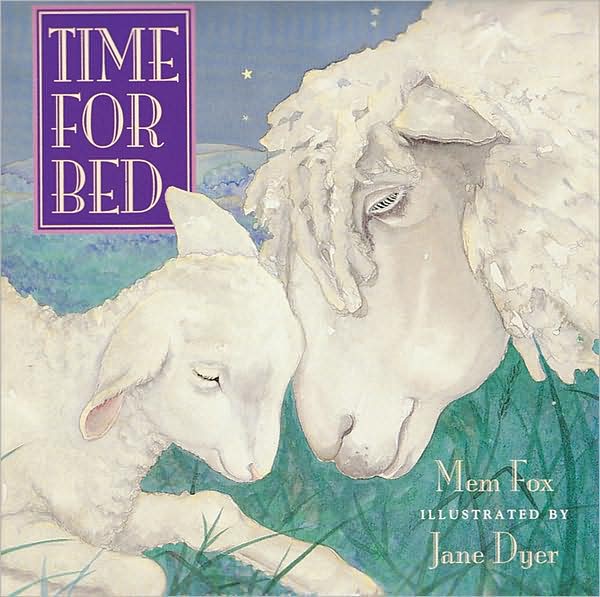
Time for Bed. Mem Fox. Illustrated by Jane Dyer. 1993/2010. Houghton Mifflin Harcourt. 28 pages.
It's time for bed, little mouse, little mouse,
Darkness is falling all over the house.
It's time for bed, little goose, little goose,
The stars are out and on the loose.
It's time for bed, little cat, little cat,
So snuggle in tight, that's right, like that.
Time for Bed is bedtime book. I like the rhythm of this one. The sweet and gentle rhymes. Each spread features a different animal. I wasn't so found of the snake. But, for the most part, I liked this one.
© Becky Laney of
Young Readers
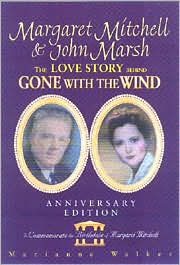
Walker, Marianne. 1993. Margaret Mitchell & John Marsh: The Love Story Behind Gone With The Wind.
I read this biography back in high school and loved it. I was so happy to get the chance to reread this one. I loved learning in rich detail--it was very rich in primary sources--the story behind one of my favorite books. The book quite simply is the story of Margaret Mitchell, John Marsh, and Gone With The Wind. We see her come-of-age in the Roaring Twenties. We see her in her wild days, surrounded by men--most interested in only one thing, mind you. We're witness to the emotional roller coaster that is her love life as she's pursued by two very different young men: John Marsh and Red Upshaw. We see this strange love triangle play out through a couple of years. She does marry Red Upshaw, and John Marsh serves as best man. But the marriage was doomed from the 'I do's.' Marsh plays hero as he has a calming effect on Mitchell. He's there for her through thick and thin. Through the scandal of her divorce. Through family feuds. He's in for the long haul. Once these two do get together, once they are married, then and only then is there a chance for Gone With The Wind to be born.
The book provides an intimate look at the behind-the-scenes story of how the novel and movie came to be. It's a thought-provoking book. One that challenges readers to see the novel in whole new ways. Guaranteed to have dozens of I-didn't-know-that-facts as well. Why was the novel so popular? Could it be that this novel was just what the Great Depression needed? And how does the novel tie into World War II? Why was this book such a world-wide sensation?
Anonymous L asks, "Has it in any way changed your perception of Gone With The Wind? If it has, has it added to or detracted from your enjoyment in reading it?"
Yes and no. I always walk away with a little something different each time I read it. I notice new things. Process it differently. Make different connections. The book did help me realize a few things. For example, it helped place the book into context. It was published in June of 1936. The Depression was still going on. These weren't easy economic times by any means. Yet this thousand-page novel (priced around $3) was selling like crazy. Over a million copies in six months. Why was it so popular? Is it because it's a great escapist novel? Because it's easy to lose yourself in a great love story? Maybe. But I think it also had something to do with the fact that these characters were struggling as well. The War. Reconstruction. Economic and social upheaval. The book shows characters with fierce determination struggling to survive, learning to thrive despite the circumstances. It's a courageous little novel when you think about it. So maybe just maybe the original readers could identify with this one a bit more than later generations. The book also discusses just how popular this novel was (in various translations) throughout Europe during World War II. Even if the novel wasn't officially allowed--deemed "dangerous" by some, readers embraced this novel and identified with it. Here is a little-long novel about war and all that that means. To readers facing war on their own home fronts, to readers facing their own invading armies, this one hit home too.
One new insight I got reading it this time focused on publicity and instant celebrity. The way the book describes Gone With The Wind's publication whirlwind--it's instant popularity, it's very loud and proud fans, the buzz surrounding the movie (or would-be movie)--reminded me of Twilight and Stephenie Meyer. Here was a novel that everyone had to read. Here was a novel that many loved. Not everyone by any means, but these characters became part of the culture. And surely Rhett is just as appealing as Edward. :) I read somewhere in the book--though I can't find the exact page now--that even before the movie was in production that people were wanting to cash in on the book's popularity and marketing things accordingly.
The more I read about the novel, the more I appreciate it.
Kristen asks, "Is it worth putting in my TBR pile?"
It's an interesting biography. I'd say it was ideal for enthusiasts of the novel. It offers details on the writing, publishing, marketing of the novel. (It took her several years to write--I think it was close to six or seven years. But once she showed the manuscript to the publisher then it all happened very quickly. In a matter of months, they had to prepare it for publication. And it was an instant success. No slow climb to super-stardom.) Including several chapters on copyright battles particularly foreign rights for the novel. Before Gone With The Wind was published--and for several years afterwards really--American authors had no protection against foreign publishers "pirating" their book and publishing it in their own countries without paying royalties to the author. The book also includes chapters on the movie--though Mitchell was not directly involved with the film. We have her correspondence with those that were a bit more inside the production.
Jacqueline C asks, "How much did Margaret Mitchell's real life inspire Gone With The Wind"
Interesting question. I think there are small elements here and there. You can see small traces of real-life people coming to life in the fictional characters. There were character traits of her husband, John, in both Ashley and Rhett. But you can't sit down and play a matching game either. The novel is mostly fiction. But Margaret, like Scarlett, was popular with men and the life of the party in her younger and wilder days. And like Scarlett, Margaret had her own love triangle to iron out. Margaret's grandparents lived during the Civil War. I don't know if all four would have been in or near Atlanta, but at least one or two of them were. I believe it was her grandmother who lived in Atlanta during the war. And I'm not sure if it was her maternal or paternal grandfather, but you can see small traces of one of her grandfathers inspiring some of the details of Rhett. But really all the characters are composites. No one person is the sole inspiration for another.
Kim asks, "Did The Love Story Behind Gone With The Wind make you think differently about the original book? Do you think you need to have read the original to enjoy this book?"
It made me think more about the original readers. It helped place the book into context. It helped me understand where Margaret Mitchell was coming from.
I think it's not absolutely essential to have read the book. But I think it would help tremendously if you would have already seen the movie. You need to know the basics. You need to know who Scarlett, Rhett, Ashley, and Melanie are. You need to have some grasp of what Tara meant to Scarlett.
© Becky Laney of
Becky's Book Reviews

By: Rebecca,
on 8/15/2007
Blog:
OUPblog
(
Login to Add to MyJacketFlap)
JacketFlap tags:
American History,
A-Featured,
A-Editor's Picks,
dickinson,
customs,
brawls,
mobilization,
dwellers,
patriots,
Add a tag
Benjamin L. Carp is an Assistant Professor of History at Tufts University. His new book, Rebels Rising: Cities and the American Revolution focuses on political activity in colonial America’s five most populous cities, tracing how everyday interactions in taverns, wharves, and elsewhere slowly developed into more serious political activity. In the original piece below Carp shows up the progression of violence in the colonies.
September 1764: the lawyer John Dickinson lodged a protest against the Pennsylvania Assembly’s petition to the king for a royal government. Assemblyman Joseph Galloway was outraged enough that he followed Dickinson out of the State House in Philadelphia and tried to seize Dickinson’s nose and whack him with his cane. Dickinson struck back with his own stick, and the two grappled until bystanders broke them up. (more…)
Share This



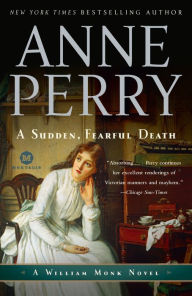

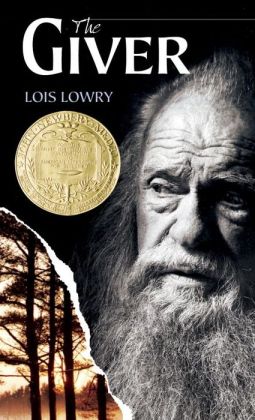

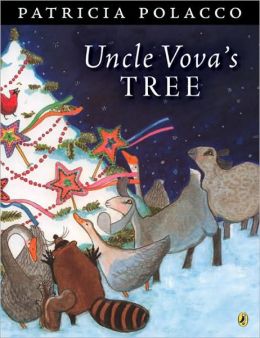

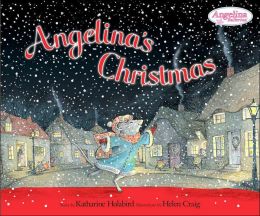

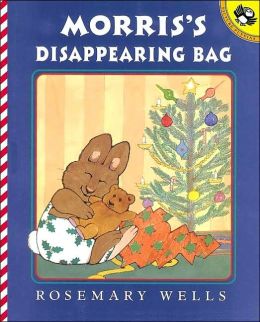






I read the start of this series, but I just couldn't get into...